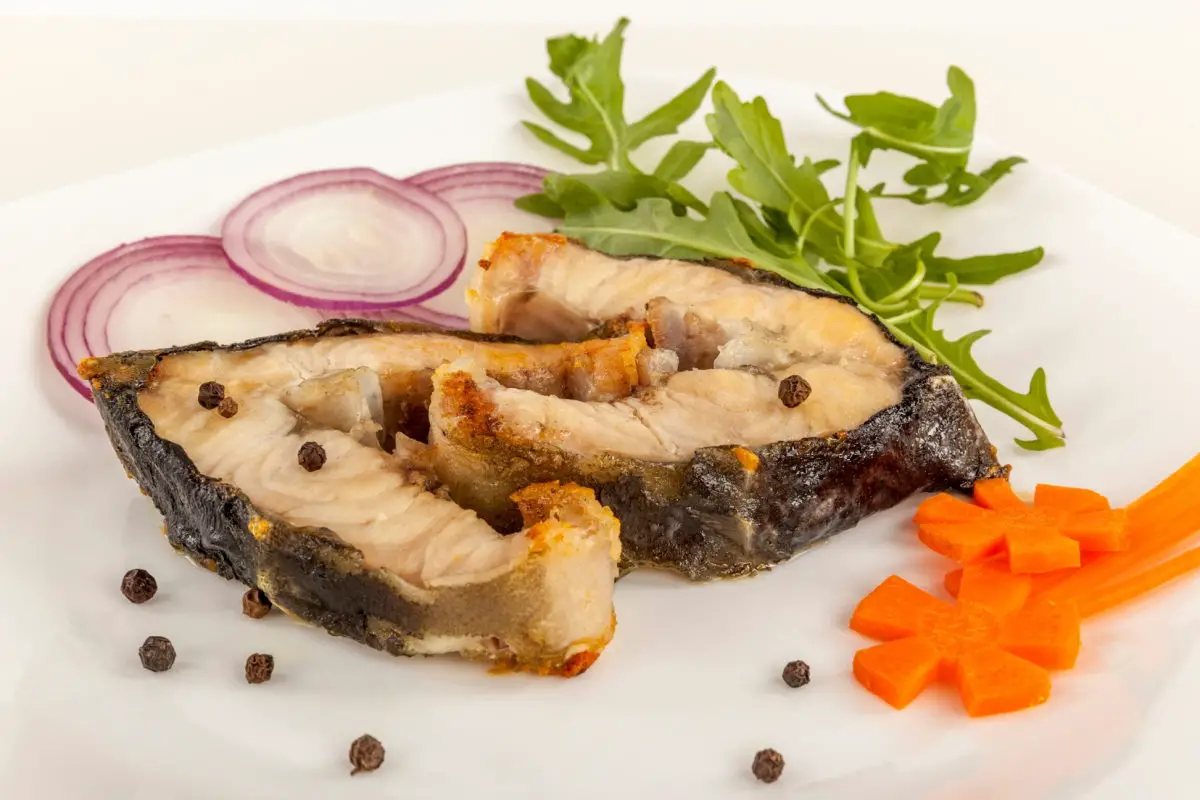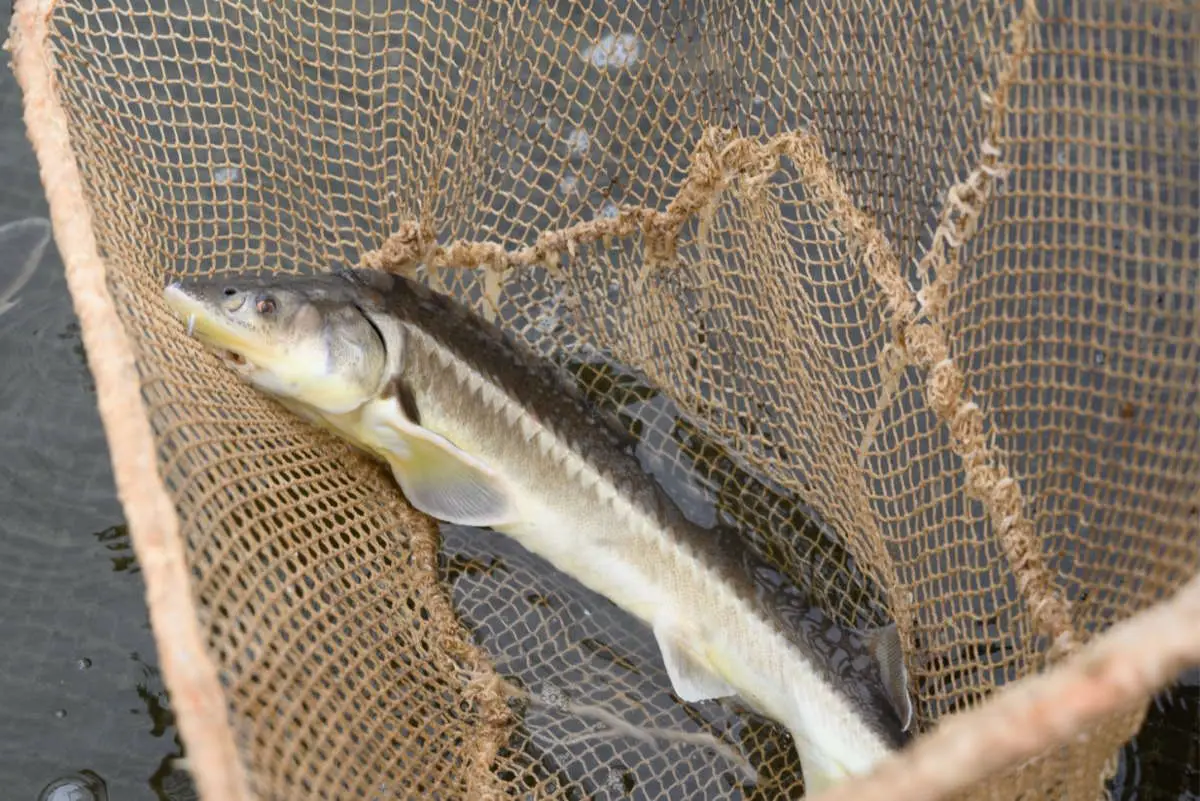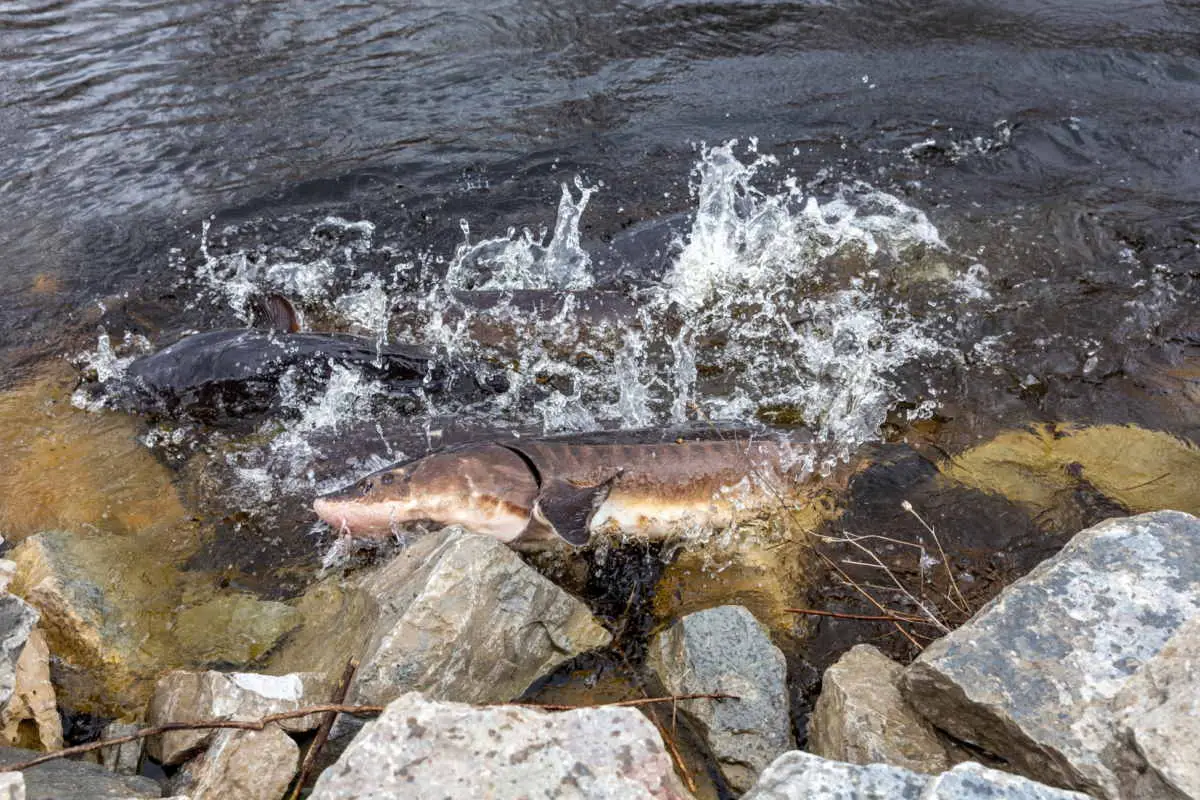Sturgeon offers more than just a great fishing experience. You can turn it into a mouth-watering recipe in your cookbook. This is not some ordinary fish that we are talking about!
Consider yourself lucky if you ever got the chance to cook this special type of freshwater fish that has existed since the prehistoric age.
Sturgeon is a rare species of freshwater fish native to the North American region. It is known for its massive size and strength, which makes it one of the top game fish in the world.
Taking Things to the Kitchen
Sturgeons are best known for their unique texture and intense flavor with consistency. Some connoisseurs like to serve it raw. But if you want to spice it up, it’s worth knowing some of the best ways to cook sturgeon. You can’t afford to mess it up!
Like the species, sturgeon meat is one of a kind that you won’t find in any other fish. It has a unique texture and is quite delicious. What makes sturgeon special is its dense, steak-like meat, similar to pork but healthier.
Getting Surgeon for Your Recipies
Because many species of sturgeon are endangered it can be hard to come by for your recipes. With a little research, you can source this amazing fish meat for your kitchen.
Start by checking with local fish and wildlife to see if you can fish for sturgeon. Many areas have a limited season for a specific size of sturgeon.
A better option might be to find a sturgeon farm and buy fresh fish for your table. There are many farms raising sturgeon for caviar and meat. We have found one that specializes in fresh or frozen, Oregon Royal Sturgeon Co. We have soured sturgeon from Oregon Royal Sturgeon Co. with good results, but this is not an endorsement or a paid affiliate link.
Sturgeon Recipe: Sky’s the Limit
Sturgeon meat is so versatile that you can unleash your culinary imagination to come up with some of the best ways to cook it. There are endless options to its recipes!
If you want to get its real and raw flavor, you can always go for a simple yet delicious recipe. But if you want to go bold and take advantage of its meat-like texture, you should definitely try spicing it up and turning up the heat.
7 Best Ways to Cook Sturgeon
The best recipe is always the simplest one. So instead of complicating it with culinary jargon, we have tried to keep our recipes short and simple. These 7 ways to cook sturgeon will work great for even beginning cooks.
1. Baking
Baking is the first step in any meat recipe. Sturgeon meat tastes better when it is slow-cooked and baked for a longer period.
Start by preheating the oven to 350 °F. If you want to give sturgeon a flavor, brush it up lightly with the sauce of your choice. You can also try white wine and lemon juice or garlic butter. The idea is to keep the surface moist while baking.
The rule of thumb is to bake the sturgeon for 18-20 minutes per inch of thickness or until it is thoroughly cooked.
Once it is baked, serve it with a garnish of your choice – lemon wedges, orange slices, horseradish, or baby greens.
2. Poaching
Poaching may be illegal in the wildlife, but not here in the kitchen! It is a slow and gentle method to cook delicate meat at a lower temperature without losing its moisture in the process.
To poach the sturgeon, place it in a saucepan wide enough for the fillet. Add a liquid of your choice – olive oil, butter, apple juice, tomato sauce, or simply water.
Slowly simmer and cook the meat at moderate temperature for about 10 minutes, depending on its size, until it is cooked. You can season it with herbs, garlic, pepper, orange slices, or lemon wedges for flavor.
Poaching fish is a great cooking method for health-conscious people who want to limit unhealthy fats in their diet.
3. Steaming
Steaming is a classic recipe and one of the simplest methods of cooking sturgeon while delivering a mouth-watering dish on the plate. All you need is parchment paper or foil and seasoning ingredients of your choice.
Wrap up the sturgeon fillets into the paper with additional seasoning for flavor and place it in the oven. Let the packets steam for five to 10 minutes or until they are thoroughly cooked.
During this process, the fillet in the packet streams in its own juices and absorbs the seasoning flavor that blends with the dish. Steaming is more effective and tastier with smaller packets.
Steamed sturgeon is best when served hot with lemon slices, spices, pepper, or vegetables for additional flavor. Be careful not to burn your mouth!
4. Broiling
Let’s turn up the heat with broiling! Broiling is a high-heat, robust cooking method best suited for dense meat. However, it is not recommended for thin and delicate fillets.
Luckily, sturgeon meat is dense enough to be broiled. You have the advantage of adding external moisture to the steak by brushing or basting it with olive oil or light sauce for the customized flavor of the dish.
Soak the sturgeon fillet in cold salted water for an hour. Drain it and season with the flavor of your choice. Now you are ready to broil the sturgeon.
Place the fillet on a broiler rack. Make sure that the broiler pan is four to six inches below the burner. Normal cook time is 10 minutes per side but you should watch it closely to avoid burning.
Season with ingredients of your choice, such as lemon juice, salt, or melted butter.
5. Grilling
Grilling is the best outdoor cooking experience you can ever have. It is even more fun when sturgeon is on the menu.
If you want to enjoy the natural texture and flavor of sturgeon, grilling is the best way to cook it. It is firm enough to withstand the grilling process without falling apart. Start by preparing the grill pan so that the steak does not stick to it. Clean the grill thoroughly and oil it well before heating.
To spice it up, you can marinate the fish and season it with your favorite ingredients beforehand. The trick to grilling is to preheat the surface at high temperature and then grill fish at medium heat for four to five minutes on each side.
Be careful not to move the fish while cooking.
Use a grill cover to give your dish a smoky flavor. It retains the moisture and natural flavor of the fish. Serve it hot.
6. Pan Frying
Pan-frying is one of the most popular methods of cooking sturgeon. It preserves the natural flavor of the fish by preserving its moisture while giving it a crispy, crunchy layer.
Add necessary seasoning ingredients as required, and brush the fillet with oil lightly. Use a carbon steel or aluminum frying pan to fry the fish to protect it from direct heat. Preheat the oven to a medium-high level and add olive oil.
Now place the fillet gently in the pan and cook it for four to five minutes until it develops a brown, crispy crust. Turn it over and continue to heat the other side. Do not overcook.
Use a non-sticking pan that requires you to handle the fillet as little as possible. You don’t want to break the crust. Add lemon wedges to garnish the dish and serve it hot.
7. Smoking
Smoking is a technique of cooking meat to develop a distinct, mouth-watering flavor in a dish that is not possible with any other way of cooking.
Traditionally, this method was used to preserve the meat for a longer period without any artificial preservatives or refrigeration.
Start with brine preparation based on your preference. Submerge the fillets completely in the brine and refrigerate them for 8 to 12 hours. Rinse the fillets and dry them off with a paper towel. Brush the fillets lightly with oil or sauce of your preference.
Prepare a heat source (wood and charcoal) on the grill to smoke the meat. Maintain a low heat between 180-200 °F so that you don’t burn the fillet. Use the grill cover to smoke-roast the meat. Your smoked sturgeon is hot and ready! You can serve it right away with preferred seasoning or refrigerate for later.
For an amazing recipe check out this one on Pioneersmokehouses.com.
Final Words
Sturgeons are best when they are fresh. Thanks to its versatile meat, you can experiment with the dishes to come up with some of the best recipes.
The best way to cook sturgeon is by retaining its natural texture and flavor. That’s why it is very important to avoid overcooking the fish. It’s time to enjoy the dish now while it is hot!
Bon appétit!





